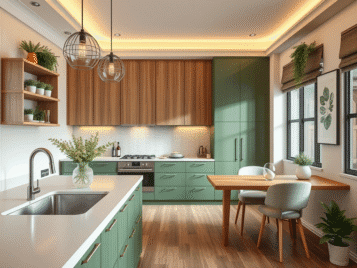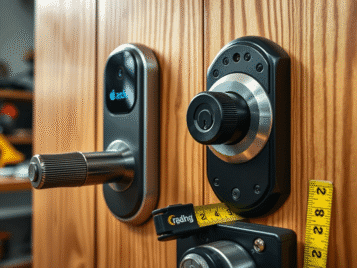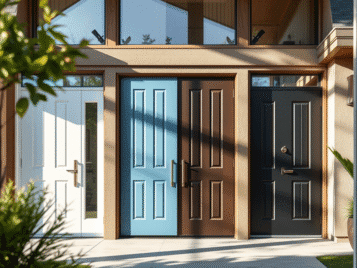A coffered ceiling—those elegant sunken panels framed by beams—can turn an ordinary hallway into a statement. Yet many homeowners worry that the beams will steal headroom or overwhelm tight spaces. Done right, coffers actually draw the eye upward, creating an illusion of height while hiding wiring, ducts, or acoustic insulation. Below are ten design approaches tested in apartments from Lisbon to Lucknow, each matched with practical building advice and SamratHPL material options.
1. Shallow Micro‑Coffers
What it is
Beams only 25–30 mm deep outline panels of equal size, keeping the visual break subtle.
Why it works
The modest drop adds texture without sacrificing precious headroom—ideal for European flats with 2400 mm ceilings.
Material tip
Use 6 mm SamratHPL ultra‑matt laminate on lightweight MDF beams. The slim profile keeps the structure feather‑light yet fingerprint‑proof.
2. Two‑Tone Grid
What it is
Paint beams in a warm neutral and skin panels in a contrasting SamratHPL woodgrain.
Why it works
The colour split distinguishes recess from rib, giving depth without extra height.
Design note
Choose a woodgrain lighter than the beam colour; dark recesses can make the ceiling feel lower.
3. LED‑Washed Perimeter Coffers
What it is
A single, continuous recess around the hall’s edges fitted with flexible LED strips.
Why it works
Indirect light bounces off the centre panel, tricking the brain into seeing more height and width.
Energy fact
Warm‑white LEDs (2700–3000 K) create a soft glow that flatters textured HPL surfaces.
4. Staggered Beam Depths
What it is
Primary beams drop 40 mm; secondary beams only 20 mm, forming a layered grid.
Why it works
The stepped profile adds drama but keeps the average ceiling plane high.
Build note
Frame in fire‑treated plywood, then over‑clad beams with SamratHPL for a seamless, splinter‑free finish.
5. Acoustic Coffers with Perforated Panels
What it is
Perforated HPL panels line each recess, backed by mineral wool.
Why it works
Sound absorption cuts corridor echo—valuable in hard‑floored European homes and marble‑clad Indian apartments alike.
Measurement
Expect a Noise Reduction Coefficient (NRC) of 0.55–0.65 depending on panel perforation.
6. T‑Bar False Coffers
What it is
A standard metal grid ceiling painted to match SamratHPL inserts, mimicking full timber coffers at half the cost.
Why it works
Quick installation and easy access for future wiring upgrades.
Sustainability
Steel T‑bars are recyclable; damaged panels swap out individually, reducing landfill waste.
7. Coffered Skylight Illusion
What it is
Central panels printed with a subtle sky or linen texture, surrounded by matte‑white beams.
Why it works
Light textures bounce ambient daylight, so halls lit only at one end feel brighter deep inside.
Finish tip
SamratHPL suede‑finish laminates avoid glare while reflecting just enough light.
8. Chevron Beam Layout
What it is
Diagonal beams meet to form chevrons, breaking the monotony of narrow, long corridors.
Why it works
Angles shift focus away from length, making tight spaces feel more dynamic.
Installation caution
Diagonal cuts demand precise carpentry; template each chevron on the floor before lifting beams overhead.
9. Minimalist Shadow‑Line Coffers
What it is
Instead of raised beams, create a 5 mm negative joint between prefabricated HPL panels.
Why it works
Maintains a flush surface but still traces a grid in shadow—great for ultra‑modern Scandinavian aesthetics.
Cleaning bonus
No protruding edges means less dust build‑up, a win for allergy‑sensitive households.
10. Integrated Ventilation Coffers
What it is
HVAC diffusers concealed in beam channels feed conditioned air through discreet slots.
Why it works
Air exits high and mixes better, avoiding drafts and saving wall space for art.
Engineering note
Specify fire‑retardant SamratHPL panels (Class B‑s1,d0 per EN 13501‑1) in regions with strict building codes.
Global Cost Snapshot (mid‑2025)
| Region | Average hall size | Basic coffer (paint‑grade) | HPL‑clad deluxe coffer |
|---|---|---|---|
| Mumbai | 120 sq ft | ₹650–₹800 / sq ft | ₹900–₹1 150 / sq ft |
| Berlin | 12 m² | €85–€110 / m² | €130–€170 / m² |
| Barcelona | 10 m² | €80–€100 / m² | €120–€160 / m² |
Prices include framing, panels, two coats of primer or SamratHPL skins, and basic LED strips where noted. Labour variations can swing totals by ±10 %.
Practical Tips for Success
- Mock‑up a corner first – Beam depth and spacing look different in real rooms than on paper.
- Mind door swing clearances – Coffers closest to walls may interfere with tall cabinet doors.
- Use low‑VOC adhesives – Especially important in airtight European builds. SamratHPL panels bond well with water‑based contact cements.
- Plan access panels – Hide one panel on magnets for future wiring or ductwork tweaks.
Final Word
A coffered ceiling is architecture’s version of a tailored suit: structured, timeless, and surprisingly forgiving to the human eye. By adjusting beam depth, panel texture, and lighting, even the most cramped hallway can feel airy and luxurious. SamratHPL’s lightweight, low‑emission laminates make the upgrade practical—whether you’re updating a heritage flat in Prague or a modern condo in Pune. Measure carefully, think in modules, and let the ceiling elevate your entire home.



